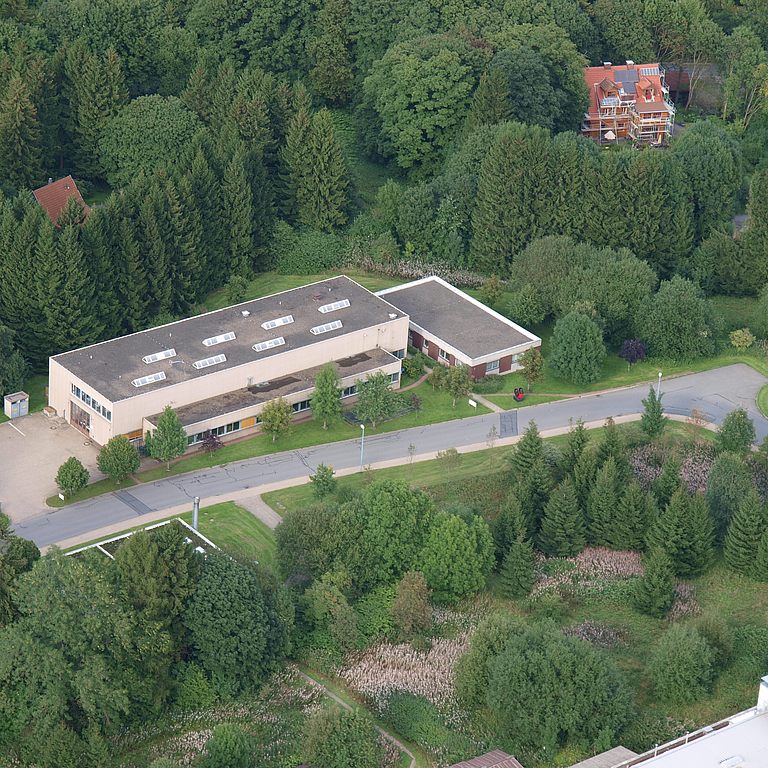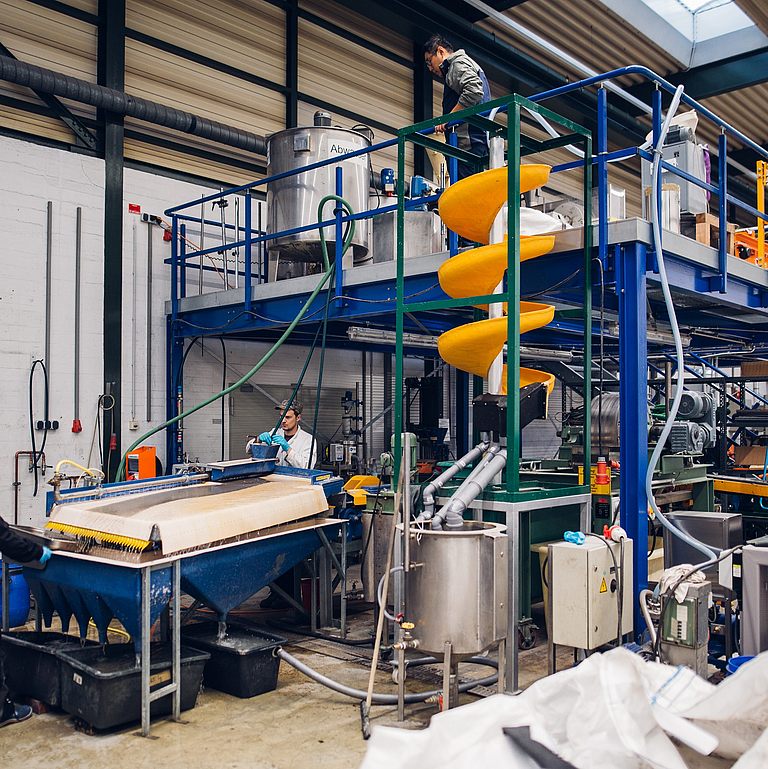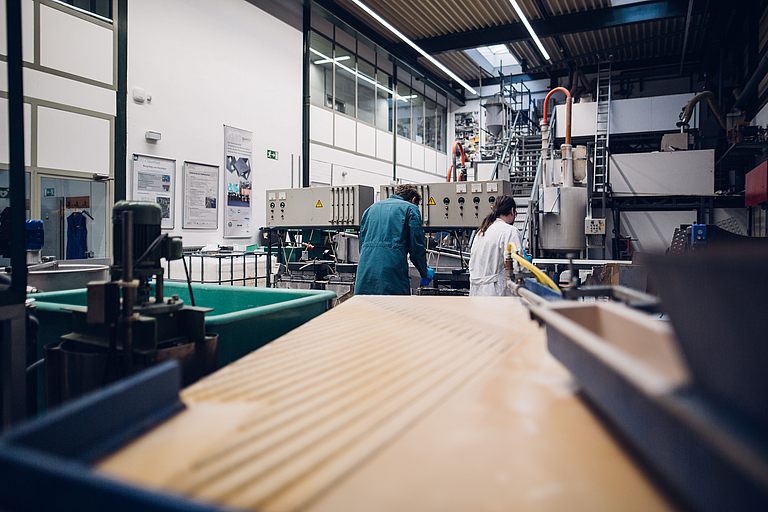OpTaRec
OpTaRec - Optimization of a tantalum recycling process by conditioning of raw materials, process automation and material logistics
Project description
In the OpTaRec project, a technology system is being developed for an existing tantalum recycling process. The relevant components that are interlinked in the system are essentially the conditioning of raw materials, process automation and material logistics.
On the secondary raw material market there are a large number of different material flows containing tantalum. Some of these (e.g. tin slag) are already being used by H.C. Starck GmbH and H.C. Starck Smelting GmbH & Co KG for tantalum production. Other material flows containing tantalum (in particular tantalum-containing dusts) cannot be sensibly fed into the existing process without further treatment steps due to their properties. The task of mechanical preparation within the framework of the project (IFAD) is therefore to develop suitable comminution circuits and pelleting processes which can subsequently be integrated into the existing processes at H.C. Starck. In addition, the existing mechanical preparation processes will be investigated in order to identify possible optimization potentials and, if necessary, to work out process engineering solutions.
A further focus is on process automation. For automation it is first necessary to set up and test suitable measuring systems. This is intended in particular to record data from metallurgical processes and to create the basis for the implementation of process automation. For this purpose, a novel measuring system (laser-induced plasma spectroscopy / laser-induced breakdown spectroscopy - LIPS or LIBS) is being tested. In this system, a small part of the surface of the sample to be measured is vaporized by a focused laser pulse and a plasma is generated on the sample surface. When the plasma decays, light is emitted which is characteristic for the elements contained in the sample. A spectroscopic analysis of the emitted spectrum allows a qualitative and quantitative chemical analysis of the investigated material.
Furthermore, the metallurgical processes will be modelled on the basis of various data collected during the project. On the one hand, the models are intended to improve the understanding of these processes and, of course, to make visible the effects of the interventions in the processes prior to realization. Another focus of the project is the simulation of material flow. This allows bottlenecks in the existing process structure to be identified, and also allows optimisation proposals to be simulated and the effects to be analysed.
The project starts in April 2017 and has a duration of three years. During this time, an understanding of the existing processes will be developed and optimization potentials in the individual processes and in the overall structure will be identified. The optimisation proposals and their effects will be investigated by means of test trials, modelling and simulations and, if necessary, implemented.
Collaboration partners
- H.C. Starck GmbH and H.C. Starck Smelting GmbH & Co KG (project manager)
- Metallurgical Process Technology and Metal Recycling, RWTH Aachen University
- Institute for Processing, Landfill Technology and Geomechanics, TU Clausthal
- Institute for Mechanical Systems Engineering and Structural Durability, TU Clausthal
Funded by:
Project Management Agency: EIT RawMaterials GmbH
Project number: 16355



![[Translate to English:] [Translate to English:]](/fileadmin/_processed_/0/e/csm_duesenfeld_jun18_098_lowres_dd33377237.jpg)
![[Translate to English:] [Translate to English:]](/fileadmin/_processed_/d/3/csm_duesenfeld_jun18_108_lowres_31e25a0a0c.jpg)
![[Translate to English:] [Translate to English:]](/fileadmin/_processed_/3/0/csm_PA8A0066_25a6616405.jpg)
![[Translate to English:] [Translate to English:]](/fileadmin/_processed_/c/d/csm_PA8A6326_b23db2d7fe.jpg)
![[Translate to English:] [Translate to English:]](/fileadmin/_processed_/8/2/csm_PA8A6373_333262f3c8.jpg)
![[Translate to English:] [Translate to English:]](/fileadmin/_processed_/7/f/csm_PA8A9524_5b4d7e23a0.jpg)
![[Translate to English:] [Translate to English:]](/fileadmin/_processed_/3/3/csm_PA8A9545_bd53136455.jpg)
![[Translate to English:] [Translate to English:]](/fileadmin/_processed_/8/d/csm_PA8A9673_2c9b95d9b4.jpg)